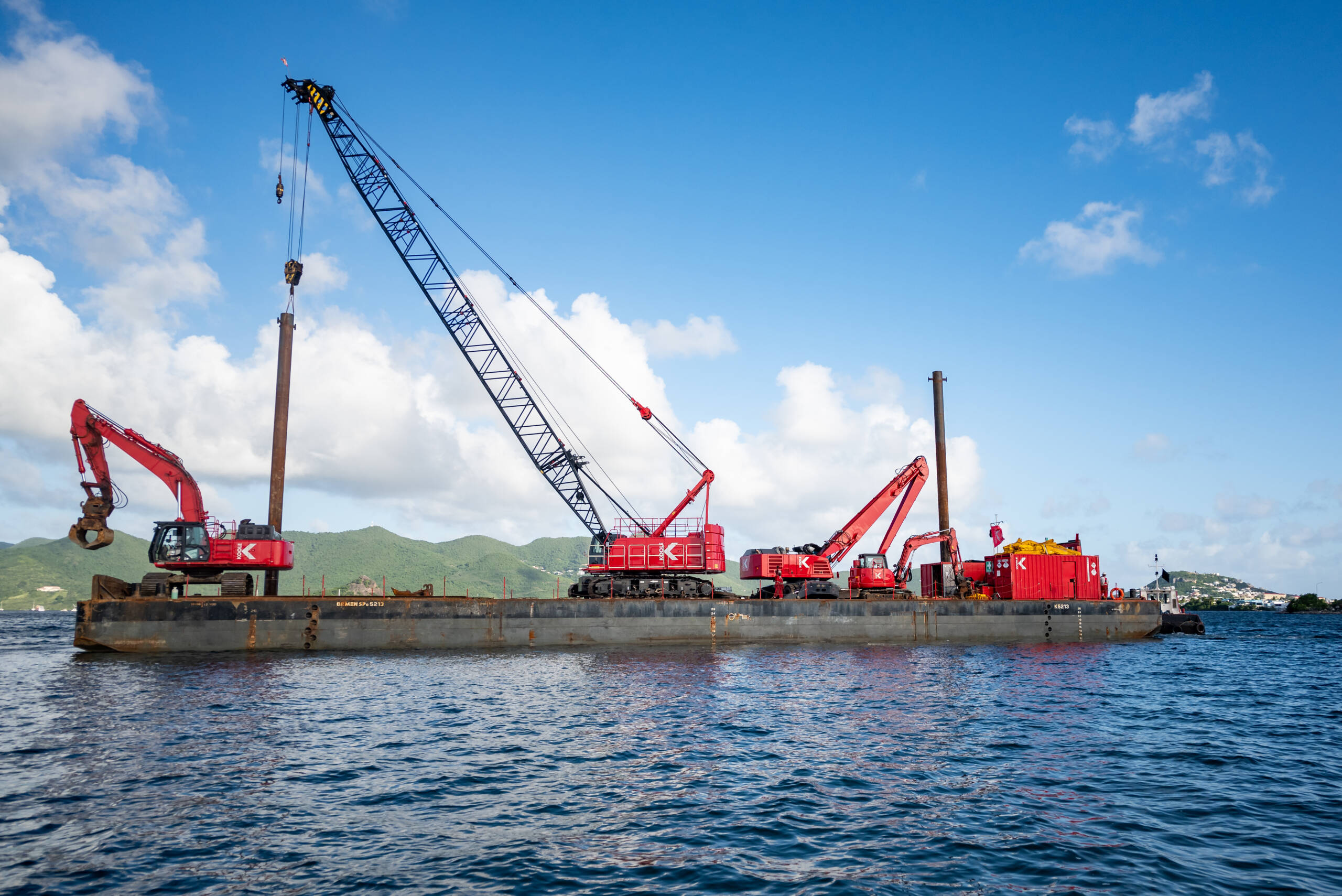Shipwreck Recovery and Salvaging
The Simpson Bay Lagoon was filled with debris from numerous damaged and submerged shipwrecks in the aftermath of Hurricane Irma and Hurricane Maria in September 2017.
Under the Emergency Debris Management Project (EDMP), the shipwreck salvaging activity has helped to clean-up the Simpson Bay Lagoon by salvaging exactly 139 shipwrecks and disposing of almost 4,000 metric tons of waste in an environmentally friendly manner. Additionally, this activity removed debris along the shorelines of Mullet Pond and the Simpson Bay Lagoon.
As a capstone to the activity, one of the removed vessels will be sunk in Sint Maarten waters to create an artificial reef and dive site. This final component is expected to take place in the last quarter of 2022.
Mullet Pond is designated as a Ramsar site, and both the Simpson Bay Lagoon and Mullet Pond have fragile ecosystems that the storm debris could have adversely affected. Recognizing the importance of Sint Maarten’s wetlands, the shipwreck salvaging activity acted with extreme care and environmental sensitivity when cleaning-up these vital waterways. This was done following World Bank environmental safeguard measures with assistance from Nature Foundation Sint Maarten.
A Ramsar Site is a wetland site designated to be of international importance under the Ramsar Convention. The Convention on Wetlands, commonly known as the Ramsar Convention, is an inter-governmental treaty that provides a framework for national action and international cooperation for the conservation and wise use of wetlands and their resources. As of 2019, there were only 2,341 Ramsar sites listed worldwide, and just 55 in the Dutch Kingdom.
Activity at a glance
| Part of project | EDMP |
| Status | COMPLETED |
| Budget | US $15,545,000 |
| Contractor |
KMS N.V.
|
| Supervisor | EOS Maritime Joint Venture |
| Start date | March 15, 2021 |
| End date | December 30, 2022 |

